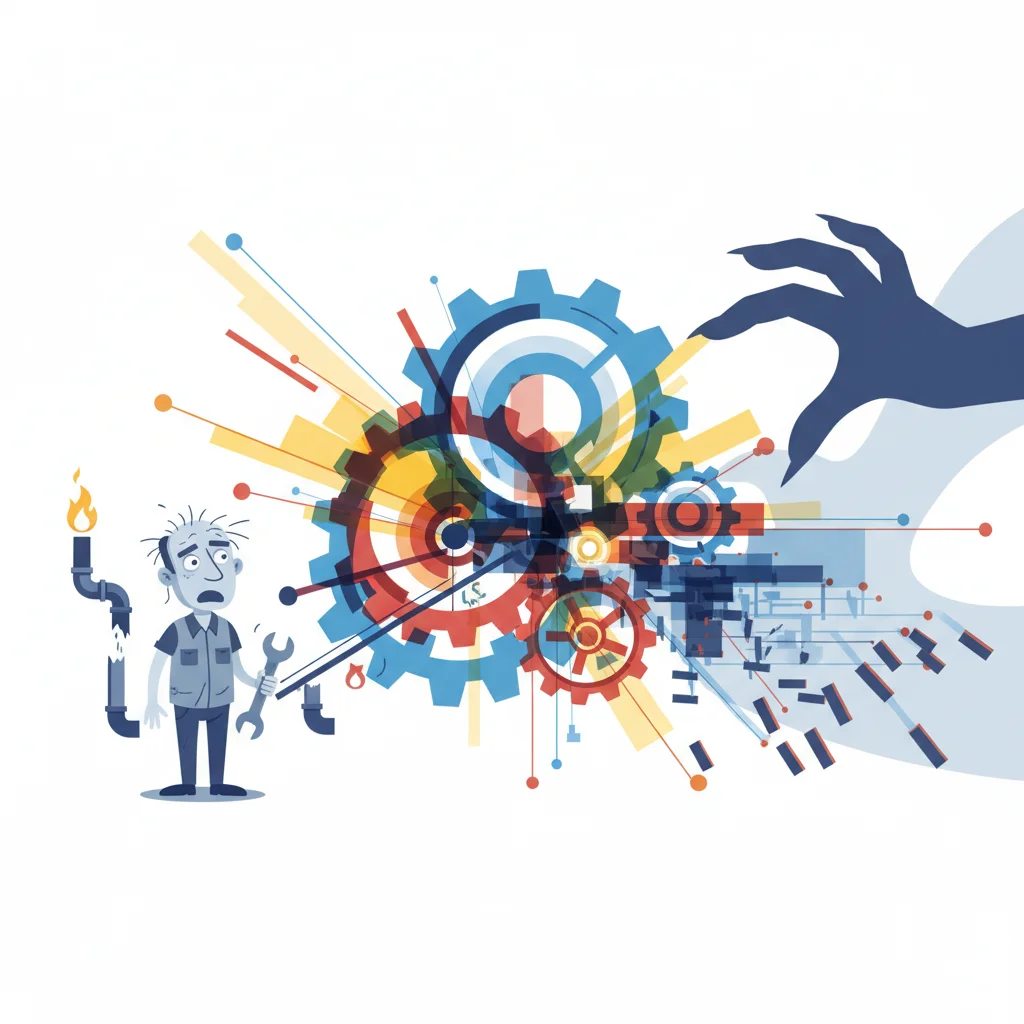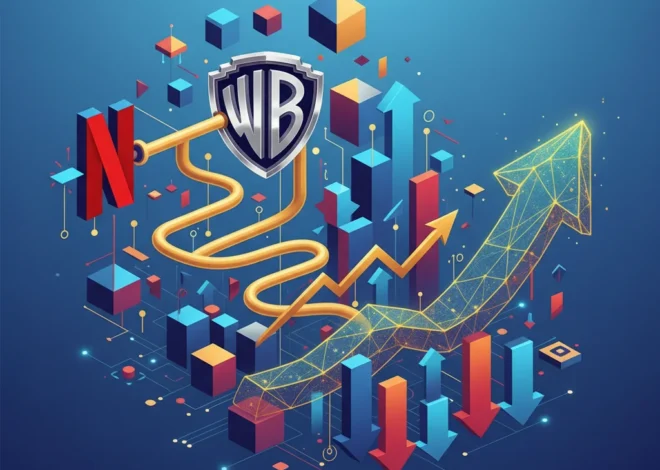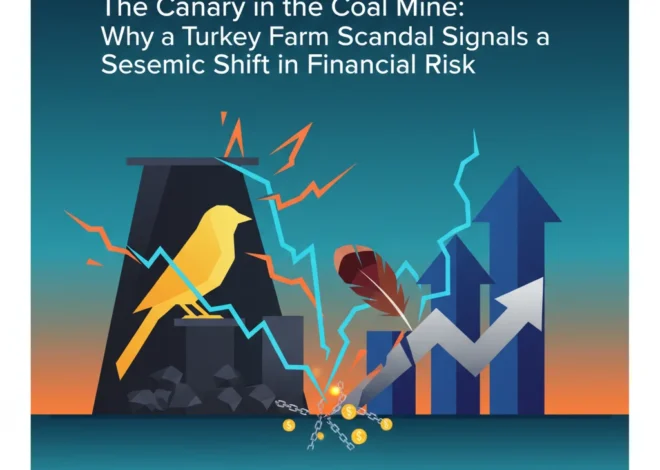
The “Dodgy Gas Fitter” Fallacy: Why Systemic Risk is the Biggest Threat You’re Not Tracking
Imagine your new gas boiler is on the fritz. The natural assumption is a single point of failure: a faulty valve, a shoddy installation, or, as one might crudely put it, a “dodgy gas fitter.” The problem is isolated, the cause is identifiable, and the solution is straightforward. Now, apply that same logic to a multi-ton, software-defined vehicle like a modern Jaguar Land Rover (JLR). It’s a tempting comparison, but as a recent letter to the Financial Times powerfully argues, it’s a dangerously flawed analogy that masks a far more profound and pervasive threat to modern corporations and the portfolios that invest in them.
In her letter, Jessica Figueras, a leading voice in UK cyber security, rightly criticizes the oversimplification of JLR’s well-documented software woes. The issue isn’t a single “dodgy” component or coder. Instead, it’s a failure of governance in managing what engineers call a “system of systems”—a complex, interconnected web of technology where the risk lies not in the individual parts, but in their chaotic interaction.
This isn’t just an engineering problem; it’s a critical challenge for finance, investing, and corporate leadership. When we misdiagnose a systemic failure as an isolated fault, we fail to grasp the true nature of risk in the 21st-century economy. This post will deconstruct this fallacy, explore the concept of systemic risk, and reveal how investors and business leaders can learn to spot this hidden danger before it craters a company’s stock market valuation.
The Anatomy of a Flawed Analogy
To understand why the “gas fitter” parallel fails, we must first appreciate the sheer complexity of a modern automobile. Your grandfather’s car was a mechanical marvel; today’s car is a supercomputer on wheels. A modern premium vehicle can contain over 100 million lines of code, distributed across 80 to 100 electronic control units (ECUs). For context, that’s more code than is in the entire Facebook codebase or a Boeing 787 Dreamliner.
These ECUs are not built by one company. They are sourced from a global constellation of suppliers: Bosch might provide the engine management system, Continental the braking system, and a third party the infotainment console. Each is a sophisticated system in its own right, developed independently. The car manufacturer’s ultimate job is that of a master integrator, ensuring these disparate systems communicate flawlessly. A failure often occurs in the “white space” between these components—an unexpected data conflict between the transmission controller and the adaptive cruise control, for example. This isn’t a faulty part; it’s a failure of the whole.
The “dodgy gas fitter” model suggests a simple fix: replace the part, fire the fitter. But in a “system of systems,” who is to blame? Is it the ECU supplier? The team that wrote the integration software? The project managers who failed to specify the correct communication protocols? As Ms. Figueras points out in her letter to the FT, the root cause is rarely a single “bug” but a “failure of governance” over this immense complexity. The .2 Trillion Typo: Unpacking the Monumental Foreign Investment Bet on America
From Simple Faults to “Systems of Systems” Risk
The shift from a mechanical to a software-defined world has fundamentally changed the nature of corporate risk. Leaders and investors trained to think in terms of supply chain logistics and manufacturing tolerances must now grapple with architectural and integration risk. The following table illustrates the profound difference between these two paradigms:
Comparison of Traditional vs. Systemic Risk Models
| Risk Aspect | Traditional Model (“Gas Fitter”) | Systemic Model (“Modern Car”) |
|---|---|---|
| Point of Failure | Single, identifiable component or person. | Interaction between multiple independent systems. |
| Root Cause | Individual error, manufacturing defect. | Flawed governance, poor integration, architectural gaps. |
| Accountability | Clear and contained liability. | Diffuse, ambiguous, and often shared across multiple parties. |
| Solution | Replace the part, retrain the individual. | Architectural redesign, process overhaul, new governance frameworks. |
| Investor Risk Profile | Isolated, quantifiable, and often covered by warranty/insurance. | Latent, cascading, and capable of causing catastrophic reputational and financial damage. |
This new risk profile is far more difficult to price into a company’s valuation using traditional financial models. It lives in the organizational charts, the project management methodologies, and the technical literacy of the boardroom—areas often opaque to outside investors.
What we’re witnessing at JLR, and previously with Boeing’s 737 MAX, isn’t just a technological teething problem. It’s a profound failure of corporate governance. Boards and C-suite executives, often with backgrounds in finance or marketing, are now responsible for overseeing products of a complexity they cannot intuitively grasp. They lack the language and frameworks to effectively challenge their engineering teams on architectural decisions. This creates a dangerous gap between accountability and expertise.
This mirrors the lead-up to the 2008 financial crisis. Bank boards signed off on complex derivatives like CDOs without fully understanding the systemic risks embedded within them. They trusted the “quants” in the same way manufacturing boards now trust the “coders.” The lesson is clear: when complexity outpaces oversight, disaster often follows. For investors, the most critical due diligence question is no longer just “What are your profit margins?” but “How does your board govern technological complexity?”
The Cascade Effect: From Codebase to Stock Price
A systemic failure doesn’t stay confined to the engineering department. Its shockwaves ripple through the entire organization and into the financial markets.
- Financial Bleeding: The direct costs are staggering. Software-related vehicle recalls have become a massive financial drain on automakers. A 2022 report from Stout estimated that warranty and recall costs for the auto industry are projected to reach tens of billions of dollars annually. This is a direct hit to the bottom line that can erode profitability for years.
- Reputational Collapse: In a connected world, stories of glitchy infotainment systems, phantom braking, or vehicles that won’t start spread like wildfire on social media. Brand equity, built over decades, can be torched in a matter of months. This directly impacts future sales and customer loyalty, a key metric for any long-term investment thesis.
- Stock Market Punishment: The market is unforgiving of companies that cannot control their own products. A major recall or a series of high-profile software failures can lead to an immediate and brutal sell-off. More importantly, it introduces a “complexity discount” to the stock, as investors become wary of the latent, unquantifiable risks lurking beneath the surface. Analyzing a company’s ability to manage its financial technology stack and product software is now a core part of modern securities trading and analysis. Beyond the Bourse: Why Marseille's Luxury Real Estate is the Ultimate Alternative Investment
Spotting Systemic Risk Across Your Portfolio
This challenge is not unique to the automotive sector. It is the defining operational and governance challenge for virtually every established industry undergoing digital transformation. Investors and business leaders must become adept at spotting the warning signs.
Fintech and Banking: The modern banking ecosystem is a quintessential “system of systems.” A single customer transaction can route through a mobile app (developed in-house), a core banking platform (from a legacy vendor like Fiserv), a payment network (like Visa), and fraud detection algorithms (from a specialized AI firm). A failure at any of these integration points can lead to service outages, security breaches, or compliance failures. The rise of open banking and interconnected fintech APIs only amplifies this complexity, making robust architectural governance paramount.
Healthcare: A modern hospital operates on a network of interconnected systems: electronic health records (EHRs), diagnostic imaging machines, robotic surgical arms, and patient monitoring devices. A software conflict could, in a worst-case scenario, have life-or-death consequences. The governance of this digital ecosystem is a critical, yet often overlooked, aspect of healthcare administration.
As an investor or board member, you must start asking a new set of questions that go beyond the balance sheet:
- Who owns the “whole system”? Is there a Chief Architect or a systems integration authority with genuine power to enforce standards across departments and suppliers?
- How is technical expertise represented in leadership? Does the board have members with deep technology and systems engineering backgrounds, or is the CIO/CTO the lone “tech voice”?
- How are suppliers managed? Does the company simply buy “black box” components, or does it have deep visibility into the software architecture and quality control processes of its key suppliers?
- What is the testing philosophy? Does testing focus only on individual components, or is there a robust, continuous process for testing the integrated “system of systems” under real-world conditions?
Solving the Financial Puzzle: A Crossword Solver's Guide to Modern Investing
Conclusion: The New Mandate for Leadership
The “dodgy gas fitter” is a comforting but dangerously obsolete metaphor. In today’s interconnected world, the greatest risks are not simple, isolated failures but complex, systemic ones. Jessica Figueras’s brief letter to the FT was a prescient warning: the true crisis at companies like JLR is one of governance struggling to keep pace with the relentless march of technological complexity.
For business leaders, the mandate is clear: build organizations that can master this complexity through robust governance, deep technical expertise at the highest levels, and a culture of holistic, system-wide thinking. For investors, the challenge is to look beyond the quarterly earnings reports and learn to assess a company’s “governance-to-complexity” ratio. In the modern economy, the companies that successfully orchestrate their intricate systems of systems will be the ones that deliver sustainable, long-term value. Those that don’t will be left dealing with the ghosts in their increasingly complex machines, leaving their shareholders to foot the bill.


